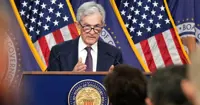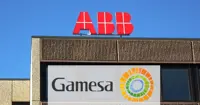Intervention by central banks spurs global rally in stocks
12 Mar 2008
The global equity markets got a much-needed shot in the arm with the announcement of new liquidity measures put forth by the Federal Reserve along with the European Central Bank, the Bank of Canada and the Swiss National Bank. Mortgage securities will no longer be completely shunned after this announcement, where the central banks agreed to lend against them to investment banks reeling under a global credit crisis. The Federal Reserve has already announced a $200 billion liquidity boost with other banks expected to follow soon.
The markets responded immediately and positively to this announcement, resulting in global equity markets ending higher. The rally was led by the Dow Jones Industrial Average, which reversed three consecutive days of losses to end 416.66 points or 3.55 per cent higher, the largest point-wise gain since 2002. The Standard & Poor composite index reacted swiftly, jumping 339.44 points to 13,344.53, more than wiping out Monday's sell-off, while Nasdaq rallied 86.42 points to 2,225.76, its biggest increase in more than five years.
In Asia too, response was positive though somewhat muted. While Hong Kong responded more exuberantly with the Hang Seng index closing almost 1.9 per cent up at 23,422.76, other Asian markets like Japan and South Korea registered more modest gains. While the blue-chip Nikkei index ended 1.6 per cent up at 12,861.13, the broader Topix also registered similar gains. The Korean KOSPI trimmed off most of its gains of the day to close only 1.1 per cent up at 1,658.83. Similar was the case with the benchmark Sensex in India. Although it had a huge gap-up opening of over 400 points in the morning, investors sold off quickly in the closing hours sending the index plummeting, resulting in it closing less than 50 points above yesterday's close.
This is the second time in four months that central bankers have agreed to act in concert in resolving the credit crisis. In December, policy makers also agreed to do currency swaps and open credit facilities to banks to ease the global liquidity crunch. However, analysts are divided on the long-term benefits of this plan. Although many hailed the temporary loan program as a better method of increasing liquidity than rate cuts which lead to inflationary pressures, they feel that such measures may at best provide a short-term solution to the liquidity problem. In this context it may be remembered that even after the December co-operative action by central banks, stocks had initially surged only to return to the doldrums later.




.webp)

.webp)

.webp)






















